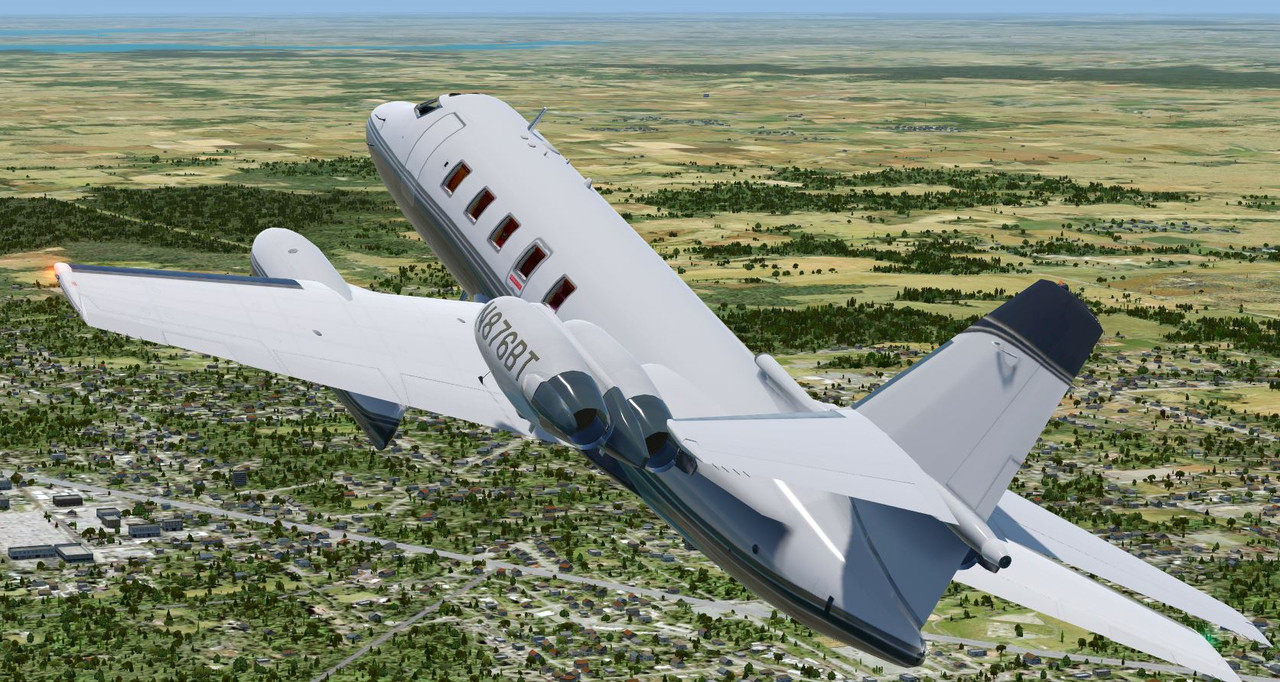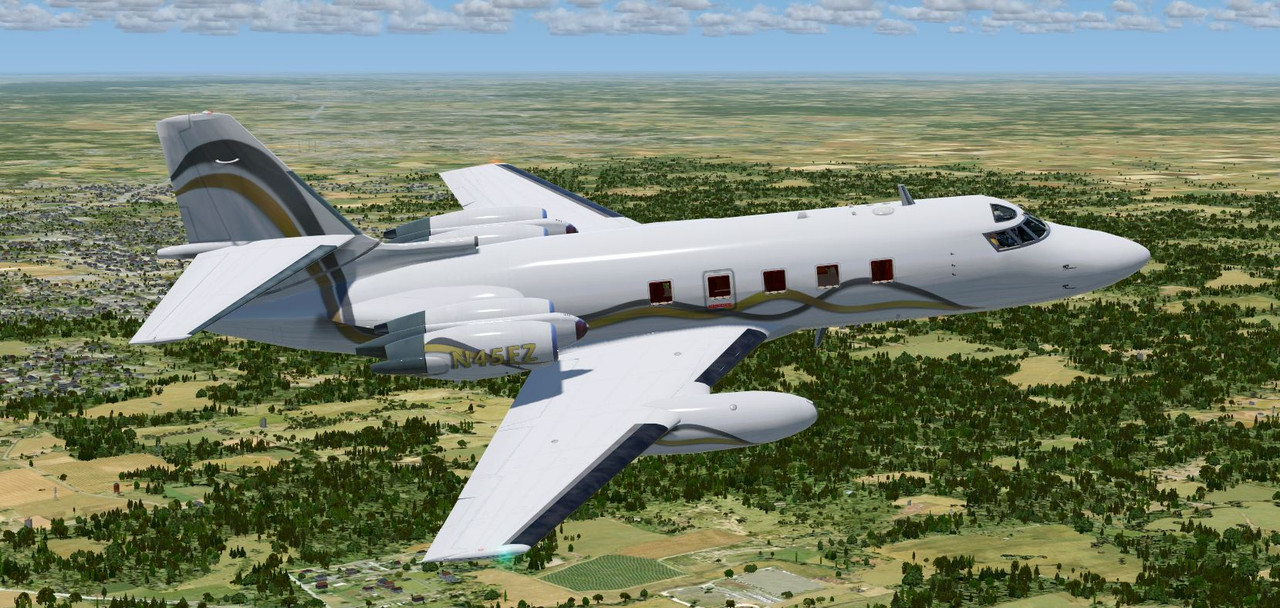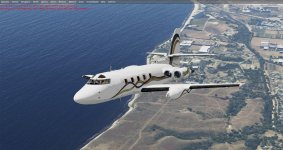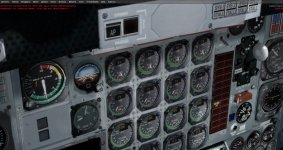-
There seems to be an uptick in Political comments in recent months. Those of us who are long time members of the site know that Political and Religious content has been banned for years. Nothing has changed. Please leave all political and religious comments out of the forums.
If you recently joined the forums you were not presented with this restriction in the terms of service. This was due to a conversion error when we went from vBulletin to Xenforo. We have updated our terms of service to reflect these corrections.
Please note any post refering to a politician will be considered political even if it is intended to be humor. Our experience is these topics have a way of dividing the forums and causing deep resentment among members. It is a poison to the community. We appreciate compliance with the rules.
The Staff of SOH
You should upgrade or use an alternative browser.
Lockheed Jetstar II
- Thread starter Jim Goldman
- Start date
gray eagle
SOH-CM-2025
I took a quick course in PBR conversion and this is the results. I sent Roland a PBR4 version file and will let him decide if he wants to upload here or where ever.



gray eagle
SOH-CM-2025


Mike71
SOH-CM-2025
I just uploaded - never done this, hope it works!
OK - looks like it did!!
link: http://www.sim-outhouse.com/sohforums/local_links.php?catid=215
I am no pro, but getting there with layering in Photoshop PSD files. I would like to point out to those wo do not already know, a couple of successful approaches to adding a texture to my white base files.
1. Create new blank layers(s) to paint on ABOVE the basic layers provided
2. once done painting in what you want, right click on individual new layer(s) and choose "blending options"
3. choose "blending mode" - multiply
If your new layer is on top of the basic layers, this should pick up the detail from the layers below it, rather than painting over the detail and obscuring it beneath the areas where you painted.
I have layers for dummy registration numbers on the outboard engines - these are text layers that can be completely edited in style, size and color using the text tool
I hope this is a quick start that will be a gradually improved set of products.
Now working on a metal texture, but will take a little time to smooth up
Looking forward to your comments and suggestions.
thunder100
Charter Member 2010
Whats next ?
FSX:I will repair some more gauges, and make next model ( Beta2 ) available und upoad here
Also incluse all the findings
P3D only:I will do like above and add GREY EAGLE'S PBR model ( THANK YOU SO MUCH )+ texture as well
Still we need XML gauges makers, Repainters (N313JS), GMAX Artist (VC) to move further more forward
Thanks to all contributors
Roland
Below is Jetstar P3D in P3DV5.2 ORBX out of KSBA

thunder100
Charter Member 2010
Put this into your panel folder
View attachment JS.zip
Allow overwrite
in panel cfg / [Vcockpit01] you replace this
gauge24=JS!JET_ITT_1, 629,133,37,39
gauge25=JS!JET_ITT_2, 675,133,37,39
gauge26=JS!JET_ITT_3, 722,133,37,39
gauge27=JS!JET_ITT_3, 768,133,37,39
and this
gauge72=LJS!Jet_FF_1, 1352,355,68,68
gauge73=LJS!Jet_FF_4, 1540,355,70,70
and this
gauge144=LJS!Jet_FF_2, 1259,355,71,65
gauge145=LJS!Jet_FF_3, 1448,356,67,68
with this
gauge24=JS!JS_ITT_1-A, 1260,267,74,72
gauge25=JS!JS_ITT_2-A, 1351,267,74,72
gauge26=JS!JS_ITT_3-A, 1441,267,74,72
gauge27=JS!JS_ITT_4-A, 1538,267,68,68
and this
gauge72=JS!JS Eng1_FF, 1352,355,68,68
gauge73=JS!JS Eng4_FF, 1540,355,70,70
and this
gauge144=JS!JS Eng2_FF, 1259,355,71,65
gauge145=JS!JS Eng3_FF, 1448,356,67,68
Result should be attached engine gauge view
to XML designers
ITT Gauge
Although I state in nonlinearilty what needles should show(coordinates) , they show too much.I got first time this, what is wrong ?
Thanks
Roland
** you can edit your panel.cfg usually well

gray eagle
SOH-CM-2025
FOR ADVANCED USERS ONLY**-->TO BE TESTED
Put this into your panel folder
View attachment 85016
Allow overwrite
in panel cfg / [Vcockpit01] you replace this
What is this supposed to do, what is the outcome of these changes?
gauge24=JS!JET_ITT_1, 629,133,37,39
gauge25=JS!JET_ITT_2, 675,133,37,39
gauge26=JS!JET_ITT_3, 722,133,37,39
gauge27=JS!JET_ITT_3, 768,133,37,39
and this
gauge72=JS!JS Eng1_FF, 1352,355,68,68
gauge73=JS!JS Eng4_FF, 1540,355,70,70
and this
gauge144=JS!JS Eng2_FF, 1259,355,71,65
gauge145=JS!JS Eng3_FF, 1448,356,67,68
with this
gauge24=JS!JS_ITT_1-A, 1260,267,74,72
gauge25=JS!JS_ITT_2-A, 1351,267,74,72
gauge26=JS!JS_ITT_3-A, 1441,267,74,72
gauge27=JS!JS_ITT_4-A, 1538,267,68,68
and this
gauge72=JS!JS Eng1_FF, 1352,355,68,68
gauge73=JS!JS Eng4_FF, 1540,355,70,70
and this
gauge144=JS!JS Eng2_FF, 1259,355,71,65
gauge145=JS!JS Eng3_FF, 1448,356,67,68
Result should be attached engine gauge view
to XML designers
ITT Gauge
Although I state in nonlinearilty what needles should show(coordinates) , they show too much.I got first time this, what is wrong ?
Thanks
Roland
** you can edit your panel.cfg usually well
View attachment 85017
I don't have gauges numbered this high. I go up to gauge 133.
gauge144=JS!JS Eng2_FF, 1259,355,71,65 >>>> dont have gauge with this number
gauge145=JS!JS Eng3_FF, 1448,356,67,68 >>>>> Ditto
thunder100
Charter Member 2010
LJS!Jet_FF_1(1,2,3,4 ) and relace with this JS!JS Eng2_FF (1,2,3,4 )
That should work
Roland
gray eagle
SOH-CM-2025
Look for this
LJS!Jet_FF_1(1,2,3,4 ) and relace with this JS!JS Eng2_FF (1,2,3,4 )
That should work
Roland
Still the same, no change.
I assumed you meant to change entries in the panel.cfg like so:
Gauge12=JS!JS Eng2_FF1, 837,724, 68, 68
Gauge13=JS!JS Eng2_FF2, 909,724, 68, 68
Gauge14=JS!JS Eng2_FF3, 981,724, 68, 68
Gauge15=JS!JS Eng2_FF4, 1053,724, 68, 68
gray eagle
SOH-CM-2025
Wish the over speed warning would be fixed. The engine data should be configured to not allow an over speed IMHO.
Just a small nitpick, I know it would take some model rework but I would of liked to see the turbine blades turning.

- - - Updated - - -
Nice shot!

gray eagle
SOH-CM-2025
Glad to of contributed my first PBR efforts to this worthwhile project. Looking forward to the upgrade to the VC.
Mike71
SOH-CM-2025
Lots of planes can exceed Vne / Mme in certain situations; pilot error, not airplane design.Wish the over speed warning would be fixed. The engine data should be configured to not allow an over speed IMHO.
Just a small nitpick, I know it would take some model rework but I would of liked to see the turbine blades turning.
Nice shot!
gray eagle
SOH-CM-2025
Lots of planes can exceed Vne / Mme in certain situations; pilot error, not airplane design.
As I did some research and unbeknownst to me:
Vmo Maximum operating limit speed. Exceeding Vmo may trigger an overspeed alarm
Va Design Maneuvering_speed. Speed above which it is unwise to make full application of any single flight control (or "pull to the stops") as it may generate a force greater than the aircraft's structural limitations.
So it looks like all the aircraft have established Vmo and a Vne but the engine(s) don't know it.

thunder100
Charter Member 2010
Lots of planes can exceed Vne / Mme in certain situations; pilot error, not airplane design.
Mike is right
Please consider that the original plane had four (14.7 kN) thrust Pratt & Whitney JT12A-8 turbojet engines. I read a lot about the plane and even the USAF ones were very fast(and thursty). Pls also consider that you need the trust mainly to climb fast
Now the modelled one has four (16.5 kN) thrust Garrett TFE731-3 turbofan engines- so for sure she theoretically can fly Mach 0.9
BUT after climb you usually reduce throttle as you need to be in healthy ITT , so I guess FDE is quite correct ( and its a Steven Small, which was very accurate in the things he did ) as also ammended by Mike 17- pilot- US Navy and more
Best regards
Roland
Mike71
SOH-CM-2025
Exactly - FAA certification limits were / are 350 KIAS to Mach 0.82 (in other words, whichever is higher; if you start to climb at sea level at 350 KIAS and hold 350 KIAS in a climb, you see your Mach gradually INCREASE due to colder temperature --.Eventually, you might not be able to get 350 KIAS due to engine thrust loss. However, you could still exceed 0.82 Mach at some point). These limits are often based on longitudinal stabiliity limits, where the pilot may start to overcontrol in pitch and overstress or lose control. More modern exec jets and airliners have higher limits because we know more about transonic flight and artificial stability methods.As I did some research and unbeknownst to me:
Vmo Maximum operating limit speed. Exceeding Vmo may trigger an overspeed alarm
Va Design Maneuvering_speed. Speed above which it is unwise to make full application of any single flight control (or "pull to the stops") as it may generate a force greater than the aircraft's structural limitations.
So it looks like all the aircraft have established Vmo and a Vne but the engine(s) don't know it.
Yes, best I can see from charts is normal cruise is 0.76 IMN, but you could go as fast as 0.82 at altitude (if high enough and light enough without exceeding engine limits), but what a fuel flow! However when you are cruising at 0.76 - 0.82 IMN at altitude you would have a relatively low IAS. You would have to be careful starting a descent because you could quickly hit the 0.82 IMN limit without reducing throttles. Gradually, your KIAS will build up if holding a constant IMN in the descent - just the opposite of what happened in the climb, and you might hit the KIAS limit if not staying on top of it. This true in any non-combat jet airplane that I can think of, and many turboprops as well.
Combat jets I have flown were usually limited by external stores limits (they could flutter, etc), but the basic airframe could be pointed at the ground at full power with no problems (LBA - "limited by airframe")!
gaab
SOH-CM-2023
My contribution to the dual needle ITT gauges, using Roland graphics.
Just replace JS_ITT_1-A by JS_ITT_1-B in the panel.cfg (It does not overwrite any file !).

https://www.dropbox.com/s/kvgp7aui32hbxya/JS_IIT-B.7z?dl=0
Regards - Gérard


